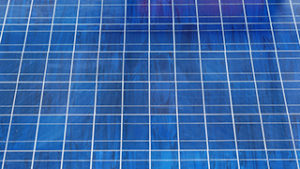Tin in Solar Technologies
Tin was early in the race for new ‘earth abundant’ materials to replace expensive and rare elements used in current solar PV technologies such as gallium. The first generation product was a ‘kesterite’ copper tin zinc sulphide (CZTS) developed by IBM. More recently tin has gained attention in ‘lead-free’ perovskite products that have dramatically competitive performance, targeted at new markets for example on architectural glass. Tin is also being explored as a heat energy storage medium on solar farms that concentrate sunlight using mirrors. Thermal technologies such as solar water heaters are likely to become more important. Apart from the materials themselves, this sector is already benefitting tin use in China particularly through increased use of solder ribbon used to join solar cells, and increased associated electronics production.


Solar power emerging as a major tin use
ITA estimates the solar industry will use over 22,000 tonnes of tin in 2022, passing the 20,000 tonne threshold. The new estimates come after PV Tech released their PV Manufacturing & Technology Quarterly report, expecting global solar module production in 2022 to...

Tin boosts solar water heater efficiency by 17%
Scientists at the National Research Centre, Egypt have demonstrated that black tin anodised aluminium is 17% more heat efficient for flat panel solar water heaters than standard black paint coatings. Solar water heaters, using sunlight to heat domestic water, are...

Tin oxide films: conductivity breakthrough could boost semiconductor markets
A thin, transparent, tin oxide film with record-breaking conductivity has been created for use in semiconductor applications such as next-generation LED lights, solar panels, and touch sensitive displays. Shoichiro Nakao, a researcher at the University of Tokyo who...

Tin perovskite solar cell performance now close to silicon
Perfecting the tin chemistry of a conductive layer within tin perovskite solar cells (PSC) is the latest improvement to boost performance in this next-generation solar technology. A multi-national research team has reported improved PSC performance, with 25.2% of...

Simpler production concept for improving tin-based perovskite solar cells
New research by scientists at Shaanxi Normal University, China has demonstrated a new, simpler technique for manufacturing tin-containing perovskite solar cells (PSCs). There have been recent, sharp improvements in the proportion of solar energy that is converted by...

Illuminating research on tin perovskite solar cells
Solar is one of the fastest growing electricity sources in the world: 2019 saw solar PV energy generation increase by 22% year-on-year. New generation cheaper, more 'earth-abundant' technologies such as perovskite are in development but need to increase their...

Tin layer in R&D breakthrough for solar cells
A team led by Hairen Tan at Nanjing University, China has discovered that using a tin layer in tin perovskite solar cells can boost the efficiency of this new low-cost, lightweight technology by making sure the tin stays in the right chemical form. There is a huge...

Oxford PV moving toward next-gen tin-using solar cells
Oxford PV, a UK-based company grounded in photovoltaics, is planning to bring tin-using perovskite-based solar cells to the market by the end of next year. The company is a spin-off from research pioneered by Henry Snaith at the University of Oxford. Snaith was part...

Advances in development of liquid tin for concentrated solar power plants
A team at Georgia Institute of Technology, US has published advances in its development of liquid tin for use as a heat transfer agent in concentrated solar power (CSP) plants. CSP uses large scale arrays of reflectors of different kinds to concentrate heat from...

Tin could more than double solar PV efficiency
A discovery by scientists at University of Groningen, Netherlands has shown that tin-based perovskite solar energy materials could more than double solar PV efficiency. The paper, published in the journal Nature, reports that extra ‘hot’ electrons generated by...
